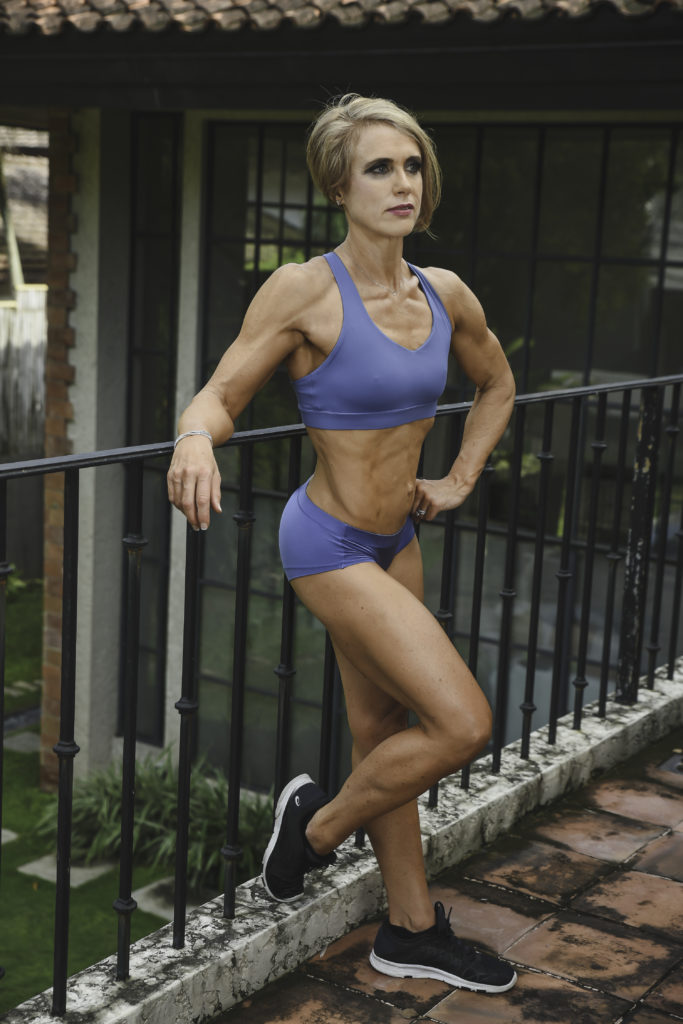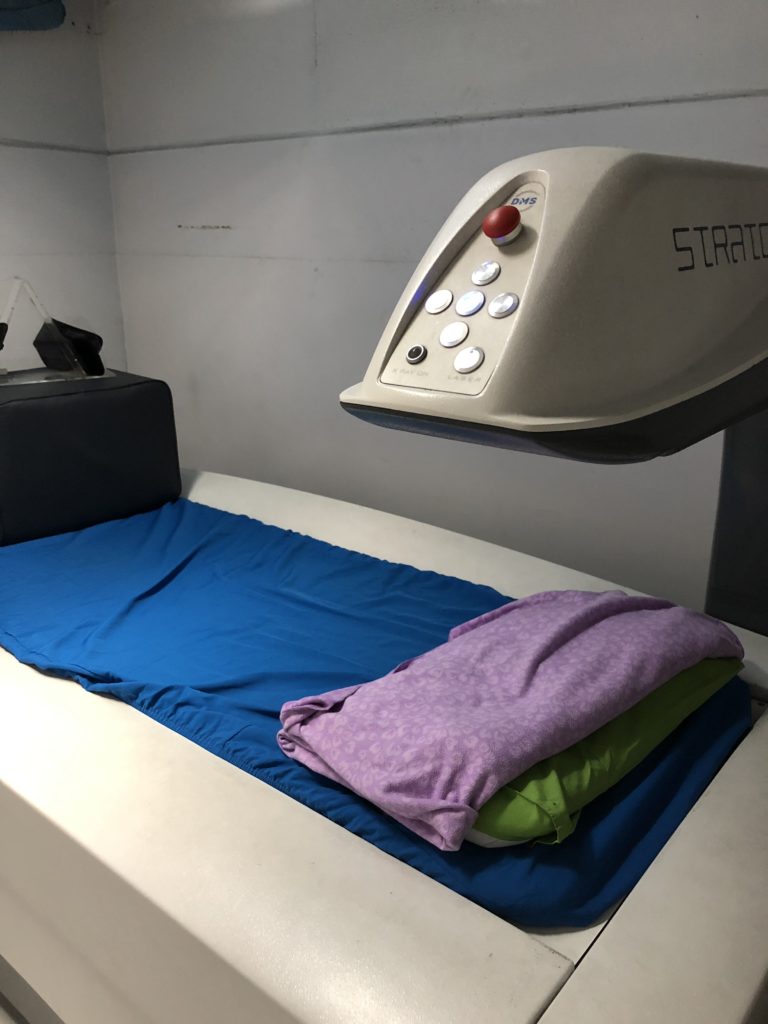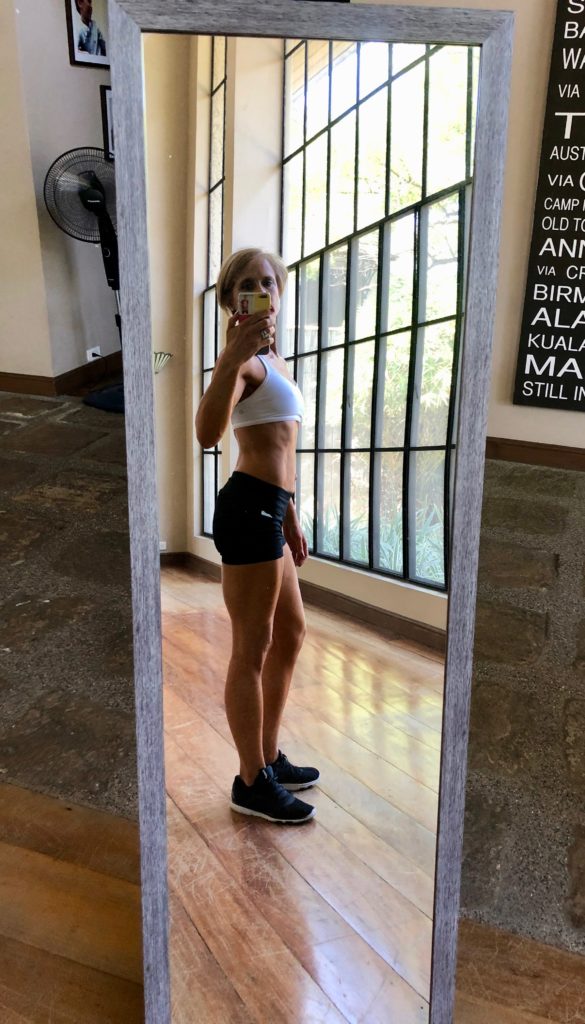Does having a fit-looking body mean you’re fit on the inside? I wanted to find out…
Before I began bodybuilding 2 years ago, I followed a 95% plant-based diet (no animal products) and bootcamp circuit training comprised the majority of my workouts. I was healthy and fit. Now, although I still eat plenty of fruits, veggies, grains, nuts & seeds, I also include animal protein in my diet, and my protein intake is much higher than it used to be. And my workout routine has changed pretty drastically… I still do the bootcamp training but I also lift heavy weights 5 days a week. I still feel healthy and fit.
But I’ve wondered how the bodybuilding lifestyle affects my overall health. For instance, did being in a caloric deficit for 5 months to achieve a very low percent body fat have any detrimental effects on my body?
I decided to find out, by doing some blood work and also a DEXA Scan.
A DEXA (Dual-Energy X-ray Absorptiometry) scan uses x-ray technology to determine the distribution of muscle, fat, water and bone in your body.
It works by passing two very low dose x-ray beams at differing energy levels through the tissues of the body. The amount of radiation that passes through the tissue is measured by a detector. This is linked to a computer program which then determines how much of your tissue is muscle, fat, water, or bone… and where it’s all stored.
DEXA scanning is available throughout the US and in many other parts of the world. There are 3 locations right here in Manila that do it!
Who should be interested in their body composition (and not just %body fat, but also lean mass and bone density)? Well, we all should, but especially people who fall into higher-risk categories for low bone mass and osteoporosis, such as:
- Female and older than 65
- Female, pre-menopausal, and:
- with an irregular menstrual cycle due to heavy exercise or low body fat
- taking progesterone birth control for more than 5 years
- Female, menopausal or post menopausal and:
- Under the age of 45
- Under the age of 65 with other risk factors
- Not taking estrogen
- Over 5 feet 7 inches tall
- Weigh less than 125 pounds
- Male and older than 70
- Male and have clinical conditions associated with bone loss
- Broken a bone over the age of 50
- Lost more than an inch of height
- Unexplained back pain
- Personal or family history of:
- Hip Fracture
- Smoking
- Osteoporosis
- Uses medications that are known to cause bone loss (including corticosteroids such as Prednisone, various anti-seizure medications such as Dilantin and certain barbiturates or high-dose thyroid replacement drugs)
- Type I diabetes, liver disease or kidney disease
- Thyroid condition, such as hyperthyroidism.
- Parathyroid condition, such as hyperparathyroidism.
- Experienced a fracture after only mild trauma.
- X-ray evidence of vertebral fracture or other signs of osteoporosis
- Heavy drinker
I had a DEXA scan about 7 years ago, as a regular part of an executive check-up. Those results showed that my bone density was a bit decreased, likely due to my progesterone injection. I was advised to do “weight-bearing exercise” and take a break from the injection. I did both of those things, so I was eager to see how my results had changed.
It was easy to schedule the DEXA scan (first-come basis at a walk-in clinic in the upper level of a mall north of Makati), and the whole process was very easy & non-invasive. First of all I filled out a medical & lifestyle questionnaire to give the doctors info on any bone breaks, family history of osteoporosis, my diet/exercise routine, medications, and other factors that could affect bone density.
I changed into a gown and laid on this scanning table. The tech adjusted my body symmetrically under the scanner, and then a scanning arm passed over me several times. It wasn’t noisy or uncomfortable in any way; in fact, I think I fell asleep! The whole thing took about 20 minutes.
My results were emailed to me the next day.
Apparently, my bone density hasn’t changed much in the past 7 years (my spine is good, but my hips are a bit lower than expected for my age) despite all the heavy weight-lifting I’ve been doing. I’m concerned about this and I would have liked to consult with the doctor about it, which is in fact part of the testing protocol. Unfortunately the consulting doctor’s office hours are limited to 2 hours twice a week, making the execution of this difficult.
So I settled for reading my results/assessment email, which advised me to “implement weight-bearing exercise”… um, hello?! I guess no one actually read my information sheet or they would know I’m already doing this. I’m not sure why I spent so much time filling out paperwork with detailed lifestyle information if the doctor wasn’t going to use it to correlate my results.
But given that my weight-lifting routine is likely adequate, there must be additional steps I can take to improve my bone density, and I plan to follow up with my own doctor as soon as possible to discuss it.
What really surprised me, though, were my body composition results: 27% body fat!!!
Really??!
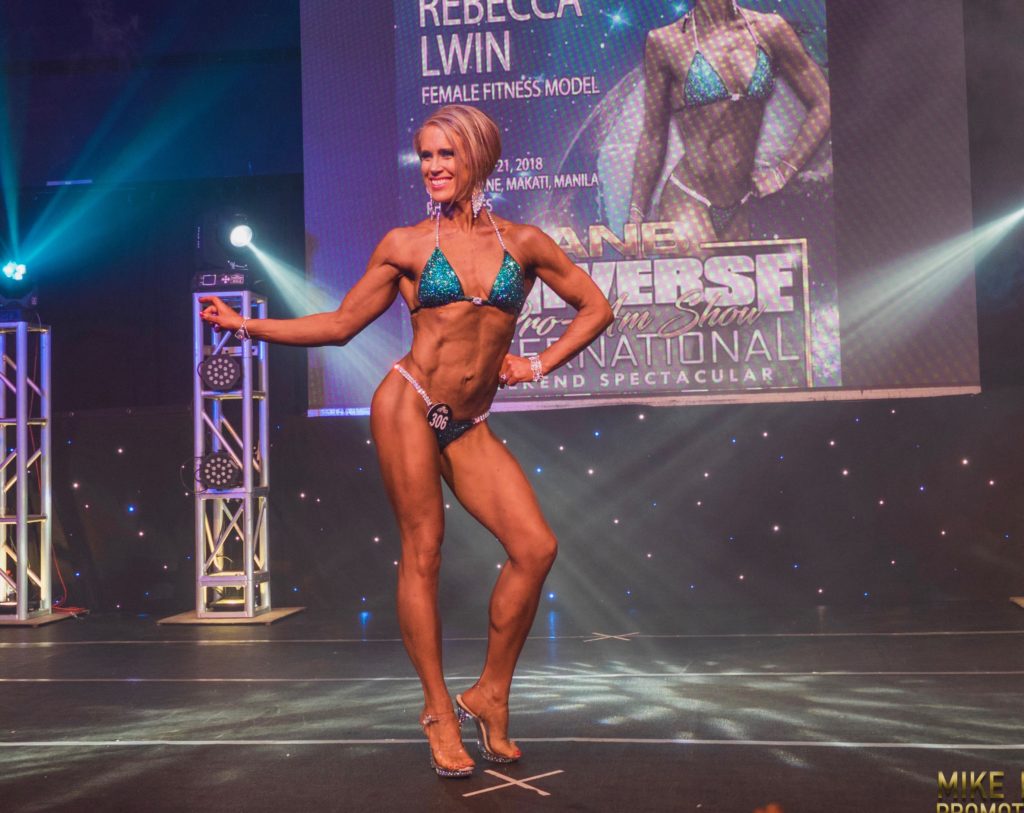 This scan was done just shy of 3 weeks after winning my Pro card in the ANB Universe Bodybuilding competition, where I estimate my body fat was around 10-12%, which is common for most women in my category.
This scan was done just shy of 3 weeks after winning my Pro card in the ANB Universe Bodybuilding competition, where I estimate my body fat was around 10-12%, which is common for most women in my category.
I confess I did gain 3 kg between show day and “DEXA day”… but even if I gained all of that weight in body fat (not considering hydration or glycogen repletion), I would still be just 15-16% body fat on scan day.
Not 27%.
It’s not even close to being within the 5% margin of error. So again, I wish I’d been able to follow up with the doc in person to discuss my results rather than just read on the assessment email about my need for a “meal plan.” Haha, if only he knew!
So that leads me to ask: is DEXA scanning the best way to assess body composition? It’s supposed to be the “gold standard” of body composition analysis, better than skinfold measurements, bioelectrical impedance (i.e., Tanita-type scales) or even displacement methods (BodPod, hydrostatic weighing). And usually, it is… the science behind DEXA is valid. But for some reason, this day I got results that were an anomaly. I’m not sure why… again, I didn’t get to consult with the doc (& this is usually part of the testing protocol). Maybe there was tech error, I don’t know.
But at the end of the day, I truly believe that knowing your body fat percent exactly isn’t paramount to maintaining good health. I can look in the mirror and see that my body fat is just fine. Maybe that’s the best test of all!
So my advice about the DEXA scan is this: it’s useful to assess bone density, especially for those of us who fall into one of the high-risk categories… and really, who doesn’t? The science and methodology are valid, and even considering the margin of error, the scan will give you enough information to take steps in a positive direction regarding your bone health. And preserving our bone health and mobility as we age is vitally important to maintaining our independence.
But I’m not sure I would use DEXA for body composition analysis. Not only were my results invalid that day, but the margin of error (even for valid tests) is too great to provide really helpful information. For example, what if I’d had valid test results that showed I was 15% body fat? Given that even a valid test has a 5% margin of error, I could be as low as 10% or as high as 20%. 20% is a good level of general fitness for a female… 10% is show-ripped. It’s a huge difference!
The best use of body composition analysis is to track it frequently (like monthly) to see trends and changes over time. Honestly, given the cost of DEXA scanning, I probably wouldn’t do it more than twice a year… not often enough to be useful.
I’ll just stick with the good ol’ mirror test!
I also did blood work to see if I was depleted in any way after all the dieting. My most recent test was last May at the end of my improvement season, when I was eating 2400 calories per day of whole, unprocessed foods such as lean proteins, whole grains, vegetables, fruits, and nut butters. My results at that time were phenomenal… even with my higher protein intake, my total and LDL (bad) cholesterol were so low my docs could hardly believe it.
While nothing was drastically different this time around, I was surprised to find out that, even after all this dieting, my cholesterol was slightly HIGHER than before! It’s still well within normal limits, but my LDL and total cholesterol bumped just a bit.
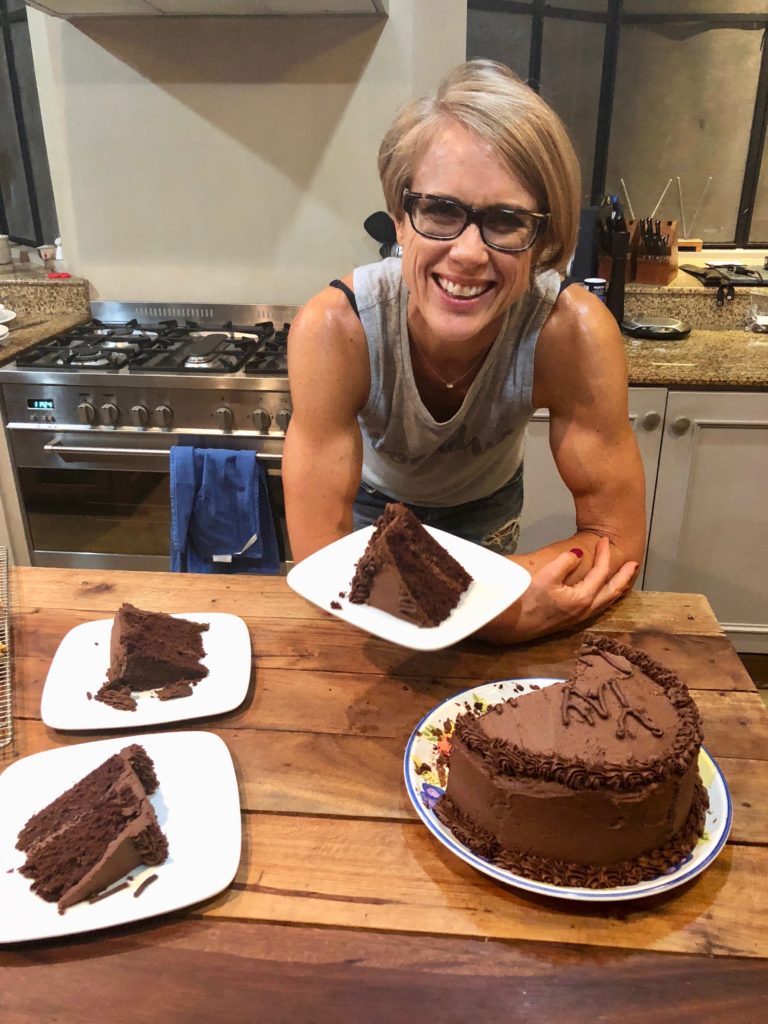
But thinking back on my food intake over the past 3 weeks, I probably should have done the blood work when I was actually still dieting! Instead, it came in the aftermath of my post-comp food fest! By test time I had eaten most of the 18 things on my “Things I Wanna Eat” list that I made during a long evening of hunger 9 days before the show (see below). These yummy treats are the stuff that dieter’s dreams are made of (literally!)… but NOT what you want to be eating for optimal cholesterol levels:
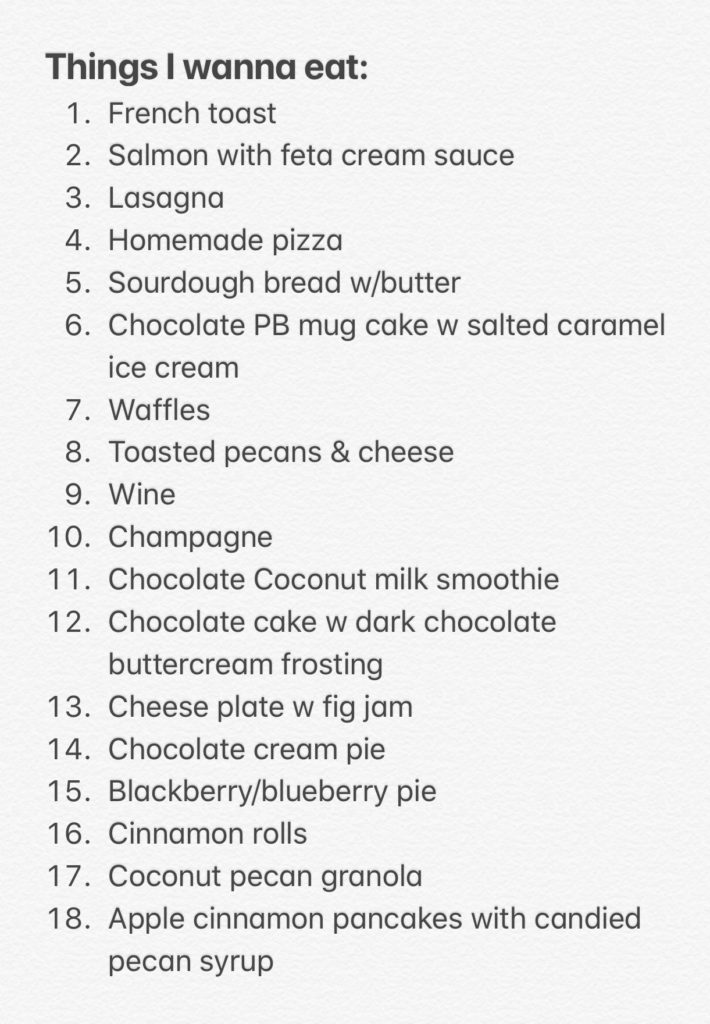 So it’s a good thing my post-show cravings have tailed off and I’m back to my regular diet that keeps me “healthy as a horse.” And I was happy to see that all my other levels (thyroid and hormone levels) were within normal limits. So even if they were slightly off during the last stages of prep, 3 weeks of resuming my normal calorie level brought everything back into line. Good to know!
So it’s a good thing my post-show cravings have tailed off and I’m back to my regular diet that keeps me “healthy as a horse.” And I was happy to see that all my other levels (thyroid and hormone levels) were within normal limits. So even if they were slightly off during the last stages of prep, 3 weeks of resuming my normal calorie level brought everything back into line. Good to know!
I do plan to follow up with my doc regarding my bone density results, and have another scan in 6 months time. Because I want to be able to still do handstands for my grandchildren!!
Disclaimer: My scan was provided free of charge by DEXA Scan. All opinions are my own.

